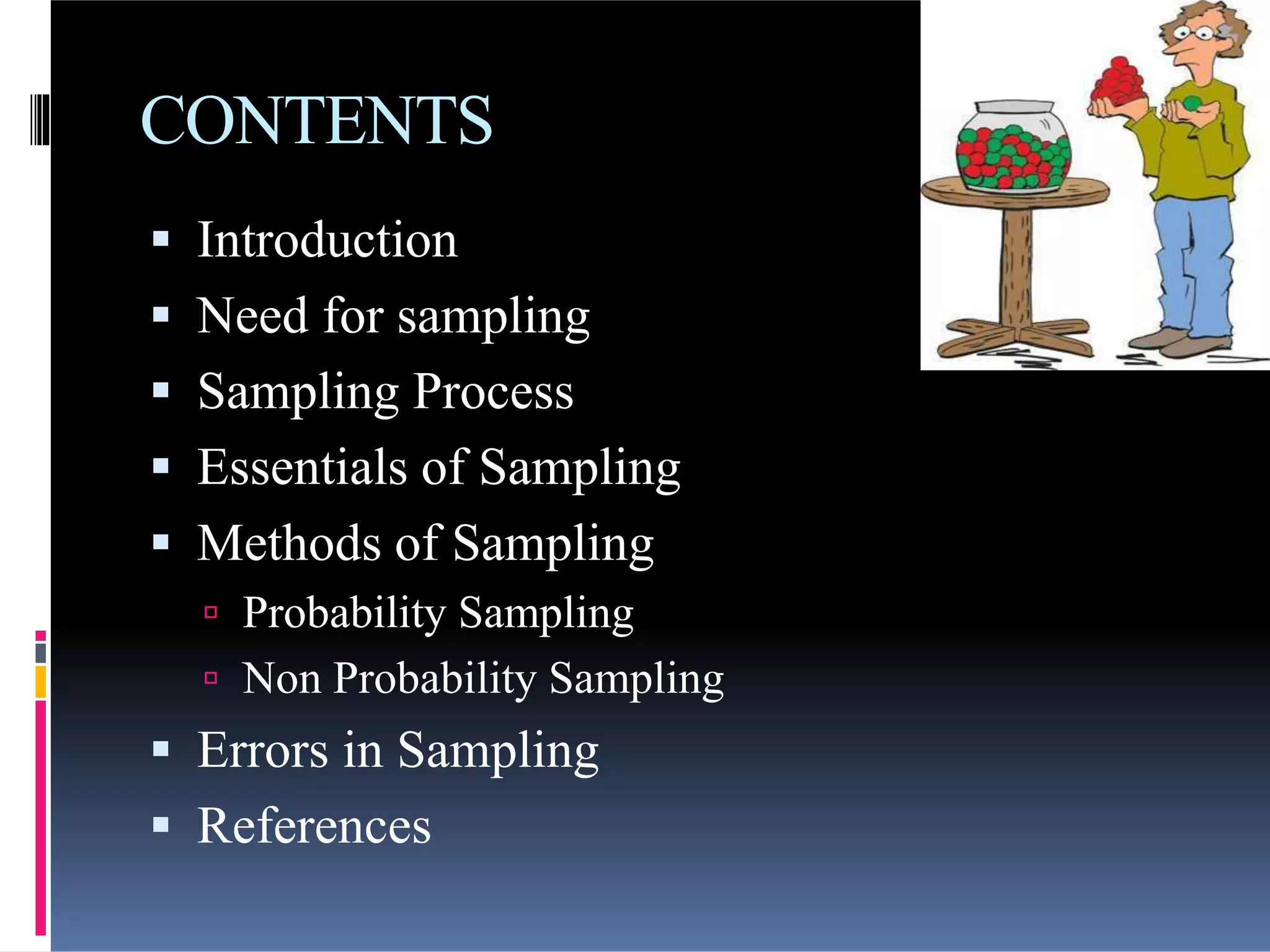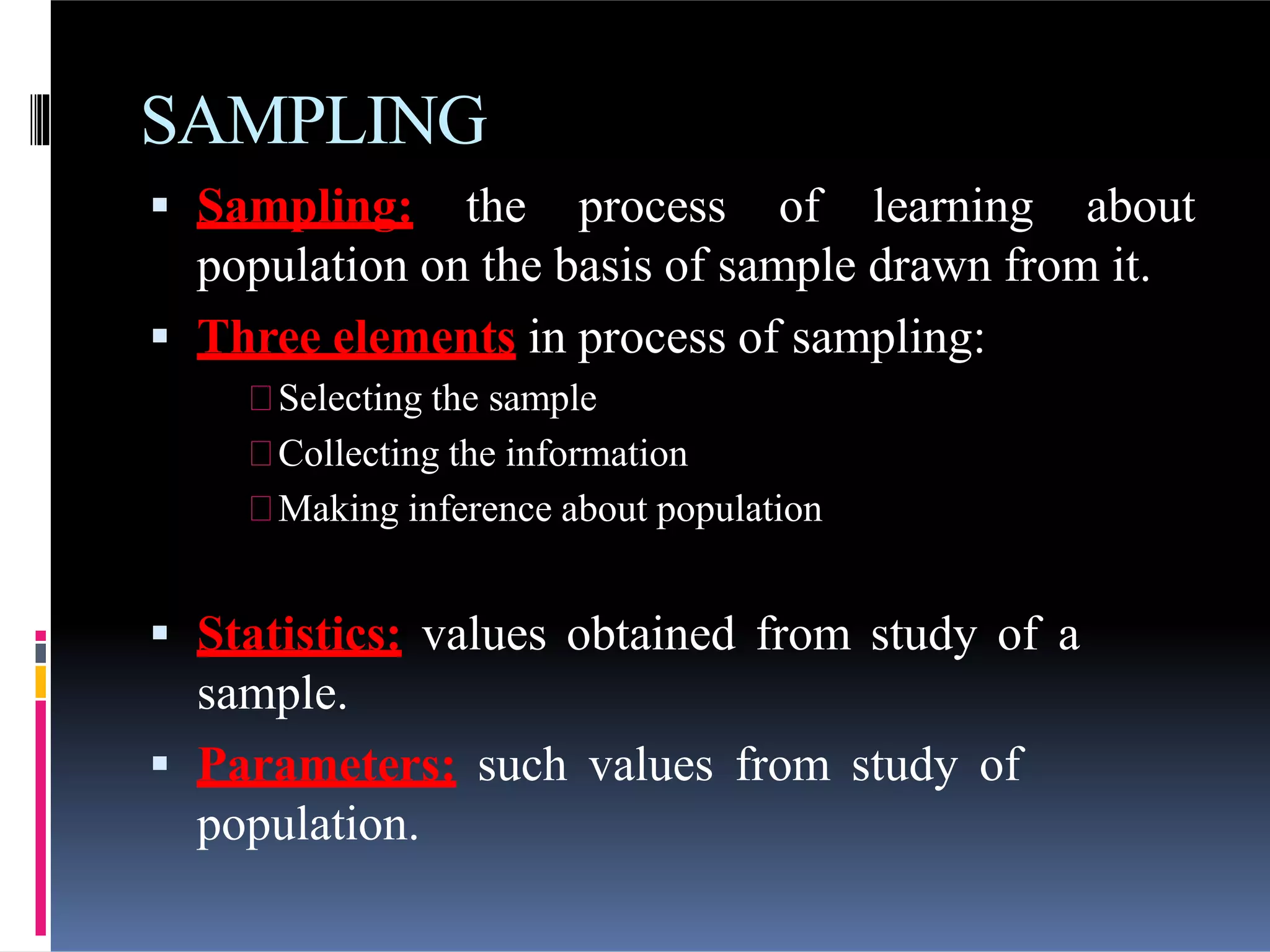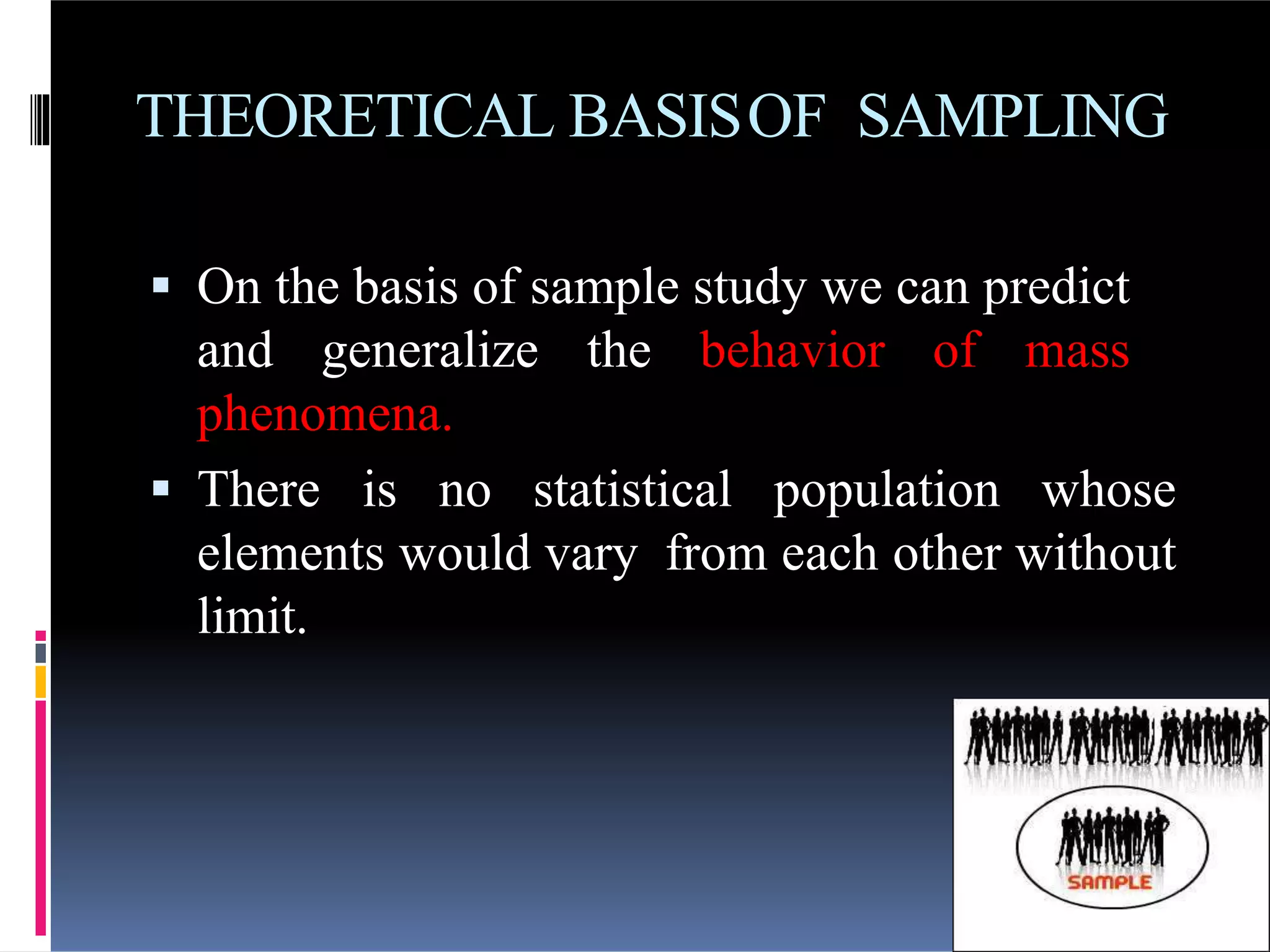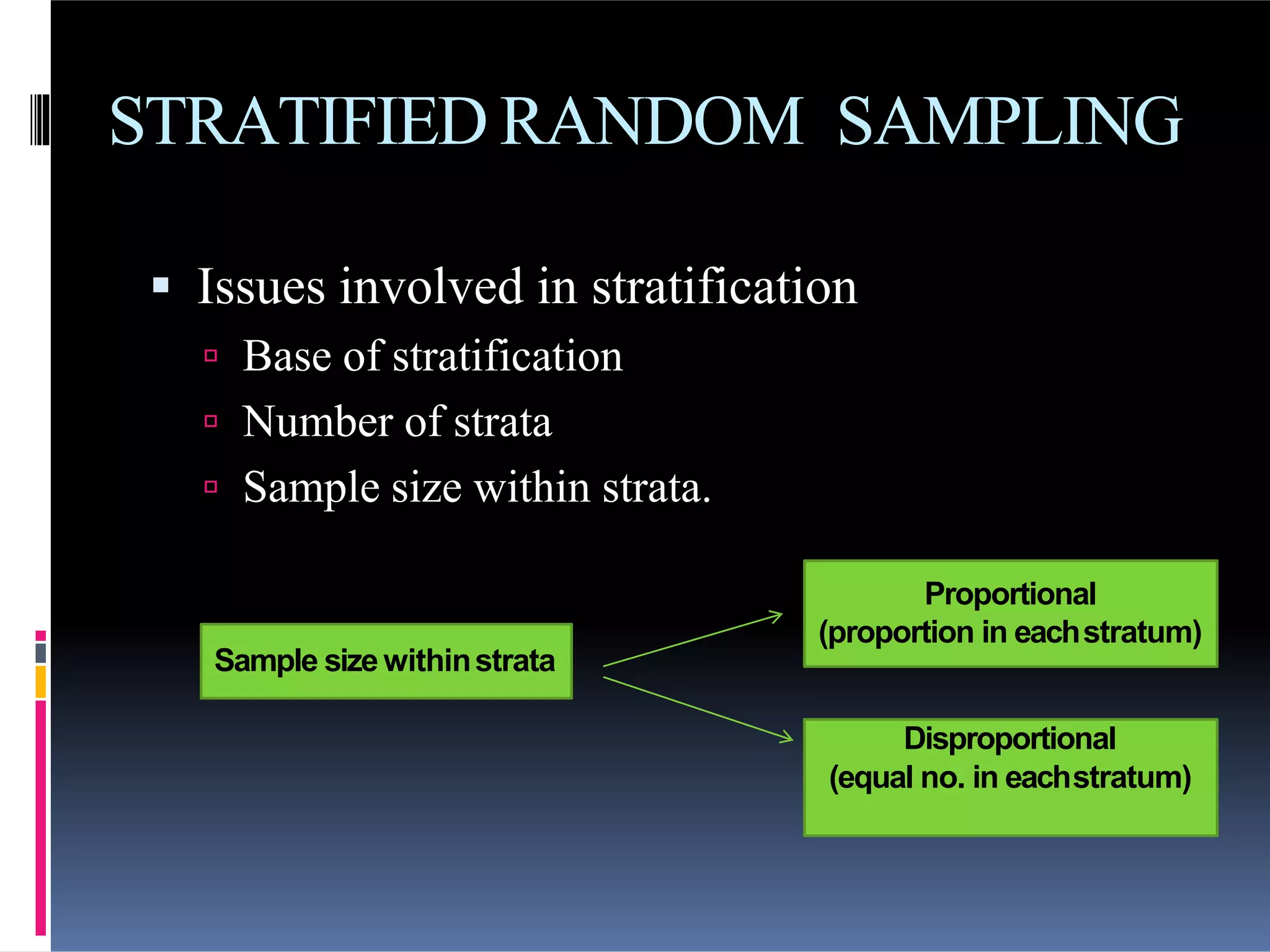This document discusses various sampling techniques used for collecting data from a population. It covers probability sampling methods like simple random sampling, stratified random sampling, systematic sampling, and cluster sampling. It also discusses non-probability sampling techniques like judgment sampling, convenience sampling, quota sampling, and snowball sampling. The document emphasizes that sampling provides data with less resources compared to a complete census but introduces errors. It provides examples to illustrate different sampling methods.























































